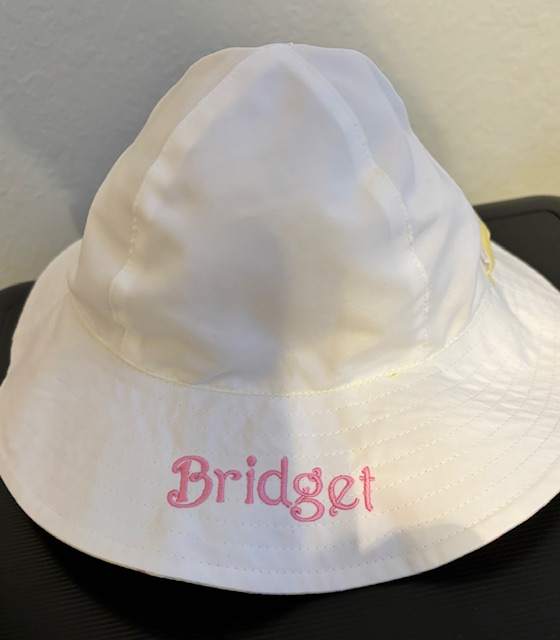Customized Mugs with Custom Embroidery Layouts for a Distinct Present
Customized Mugs with Custom Embroidery Layouts for a Distinct Present
Blog Article
The Art of Customized Embroidery: Opening the Tricks to Creating Unique and Remarkable Styles
The secrets to developing personalized needlework styles that mesmerize the eye and leave a long lasting impression lie in a fragile equilibrium of technique, imagination, and focus to information. As we dive into the world of custom embroidery, we reveal the nuanced interplay between string choice, stitch intricacy, and design personalization that boosts a mere garment to a work of art.
Choosing the Right Needlework Threads
When choosing needlework strings, what key elements should you take into consideration to make sure the best results for your custom-made styles? The option of needlework thread is vital in figuring out the final outcome of your embroidered style.
Moreover, the weight or density of the string plays a considerable role in the appearance of the embroidery. Thicker strings can add dimension and structure to your style, while finer strings are suitable for detailed information and tiny message. Furthermore, thinking about the shade fastness and washability of the thread is vital to make sure that your personalized designs maintain their quality and vibrancy in time. By very carefully evaluating these elements and choosing high-quality threads that meet your particular needs, you can enhance the aesthetic appeal and durability of your stitched creations.
Exploring Different Stitch Strategies
To look into the realm of 'Checking out Various Stitch Methods', one should understand the details and subtleties that each sewing technique offers the art of embroidery. Different stitch techniques not just add aesthetic rate of interest however also add to the general texture and dimension of the design. One preferred stitch technique is the satin stitch, which entails carefully stuffed parallel stitches to create a smooth and shiny surface, ideal for completing shapes and developing vibrant details.
On the other hand, the backstitch is a flexible technique typically made use of for detailing and including great details. It entails sewing in reverse to produce a solid line of needlework. In addition, the French knot stitch includes a tactile element to styles, excellent for producing distinctive accents like blossom facilities or attractive touches.
Exploring various stitch strategies permits embroiderers to play with light, darkness, and deepness within their designs, elevating the aesthetic appeal and artistic high quality of their needlework tasks. By mastering numerous stitching approaches, one can open limitless possibilities for creating distinct and unforgettable personalized needlework pieces.
Incorporating Personalized Style Aspects
Having actually checked out the intricacies of different stitch techniques such as the satin stitch, backstitch, and French knot, the emphasis now moves towards integrating customized design aspects in personalized needlework tasks. Customized layout aspects play a vital duty in making needlework tasks genuinely distinct and memorable. One way to incorporate personalization is by adding initials, names, or significant days to the layout. This not only includes an individualized touch yet also improves the emotional worth of the embroidery piece.
An additional method to incorporate customized style aspects is by consisting of icons or themes that hold special meaning to the recipient or show their passions and individuality. For instance, incorporating a preferred flower, animal, or hobby-related symbol can make the needlework layout much more purposeful and customized. Furthermore, picking shades that resonate with the recipient or align with the desired motif can additionally improve the customization of the needlework project.
Mastering the Art of Shade Control
One key element of color sychronisation is understanding color theory. This consists of recognizing exactly how different shades connect with each various other, the emotions they share, and how they can be integrated to develop aesthetically attractive layouts. By applying shade theory principles, embroiderers can produce unified shade palettes that enhance the total appearance of the layout.
Additionally, taking note of contrast is vital in shade coordination. Utilizing contrasting colors can help particular components of the layout pop, boost clarity, and create a visually dynamic needlework piece. By understanding the art of shade coordination, embroiderers can boost their designs and develop memorable pieces that resonate with clients and audiences alike.
Enhancing Texture With Advanced Embroidery Stitches

Bullion knots, on the other go to my site hand, can be used to produce twisted, ropelike aspects that include an extravagant feel to the embroidery. Exploring with these sophisticated embroidery stitches enables you to push the boundaries of traditional embroidery and create really unique and aesthetically enticing textures in your designs.
Final Thought
To conclude, the art of custom-made embroidery includes a combination of picking the right threads, exploring various stitch methods, incorporating individualized design elements, mastering color coordination, and improving appearance with innovative stitches. By recognizing and implementing these key elements, embroiderers can develop one-of-a-kind and memorable designs that showcase their imagination and ability. Embroidery fanatics can unlock the secrets to producing beautiful and bespoke items that stick out and leave a long lasting impact.
Report this page